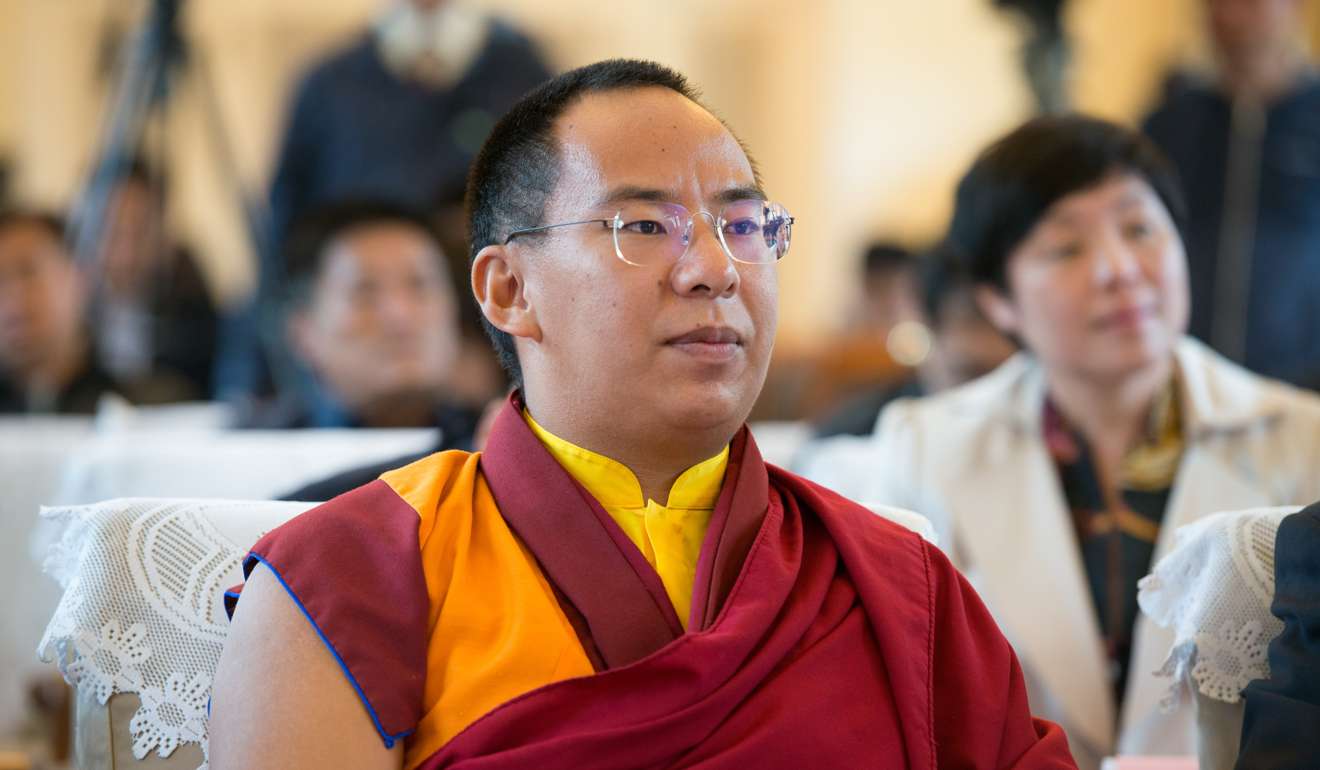
China’s Panchen Lama vows to uphold ‘glorious tradition’ of patriotism
Youth named by China as second-highest figure in Tibetan Buddhism is dismissed by many Tibetans
A youth named by China as the second-highest figure in Tibetan Buddhism, but reviled as a fake by many Tibetans, has pledged to uphold the “glorious tradition” of patriotism that holders of his position have followed, state news agency Xinhua reported.
Although officially atheist, China selected Gyaltsen Norbu as the 11th Panchen Lama in 1995 in a drive to win the hearts and minds of Tibetans.
Tibet’s current spiritual leader, the Dalai Lama, whom Beijing brands a dangerous separatist, had announced his own choice of a six-year-old boy, but he was taken away by authorities and has since vanished from public view.
When meeting Sun Chunlan, head of the United Front Work Department which helps oversee religious groups, China’s Panchen Lama said he would work hard to maintain the country’s and ethnic unity, Xinhua said late on Friday.

He will “resolutely endorse comrade Xi Jinping as the core of the Communist Party, endorse socialism with Chinese characteristics and continue the glorious tradition of Panchen Lamas in the history of loving the country and loving religion”, Xinhua paraphrased him as saying.
He would not fail to live up to the expectations of the party and contribute to promoting Tibetan Buddhism and socialism, the report added.
Sun said she hoped he “deeply understands” that the Communist Party is the only representative for the basic interests of the Tibetan people, and that he should always stand with the party, Xinhua said.
The report said the meeting took place in Beijing, where China’s Panchen Lama is believed to spend much of his time, rather than in Tibet.
China has gradually exposed its Panchen Lama in public roles in the hope he will achieve the respect commanded by the Dalai Lama among Tibetans and globally, and in 2012 he made his first trip outside mainland China when he visited Hong Kong.
Chinese troops marched into Tibet in 1950. China routinely rejects criticism of its rule there, saying it has brought much needed development to a remote region and that it respects Tibet’s culture and religion.
After the Dalai Lama fled to India in 1959, the 10th Panchen Lama stayed on and was initially seen as a collaborator. It later emerged that his criticism of Beijing had earned him more than a decade spent either in prison or under house arrest.
Freed in 1977, he was politically rehabilitated the following year, and died in 1989.

